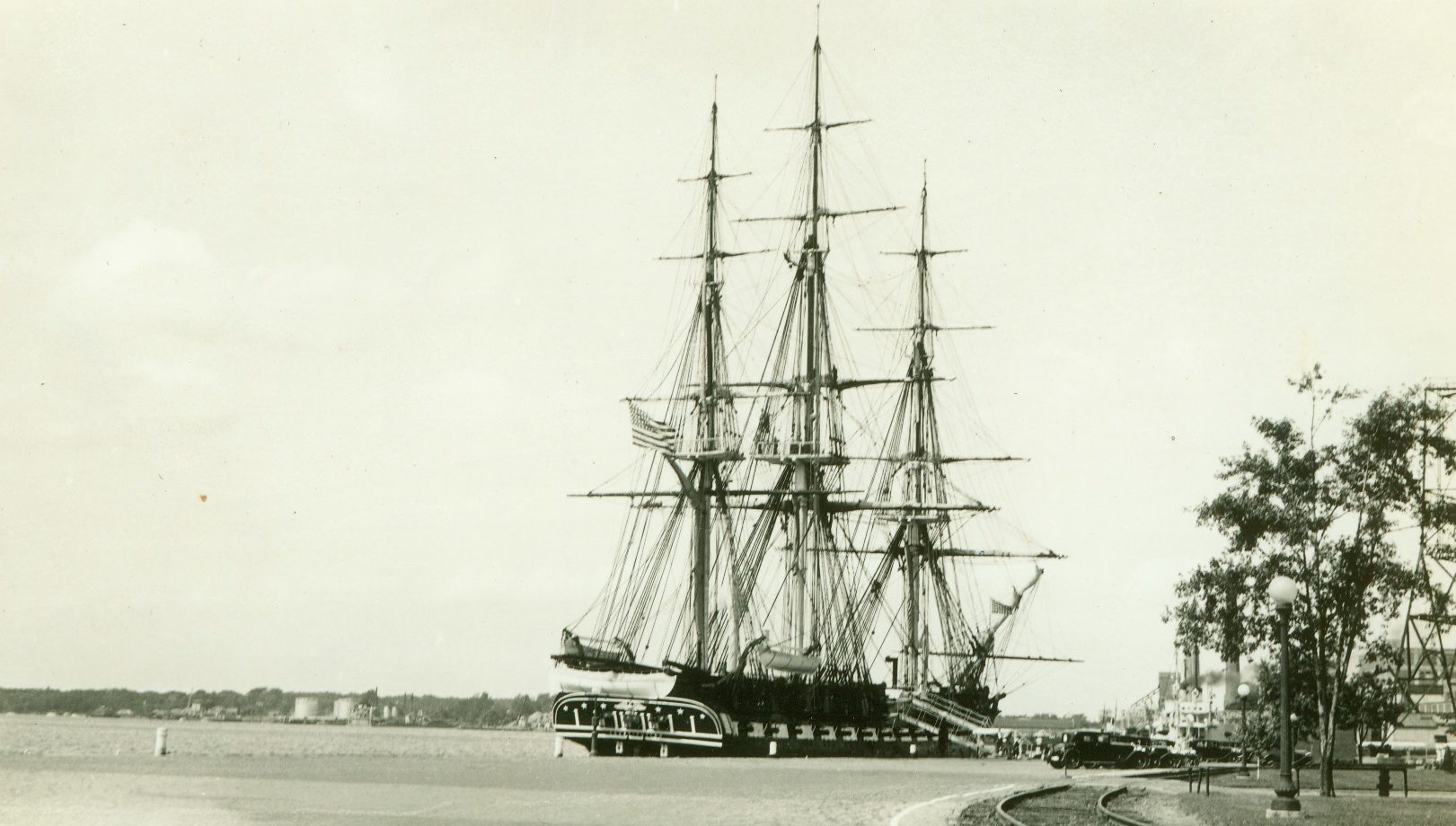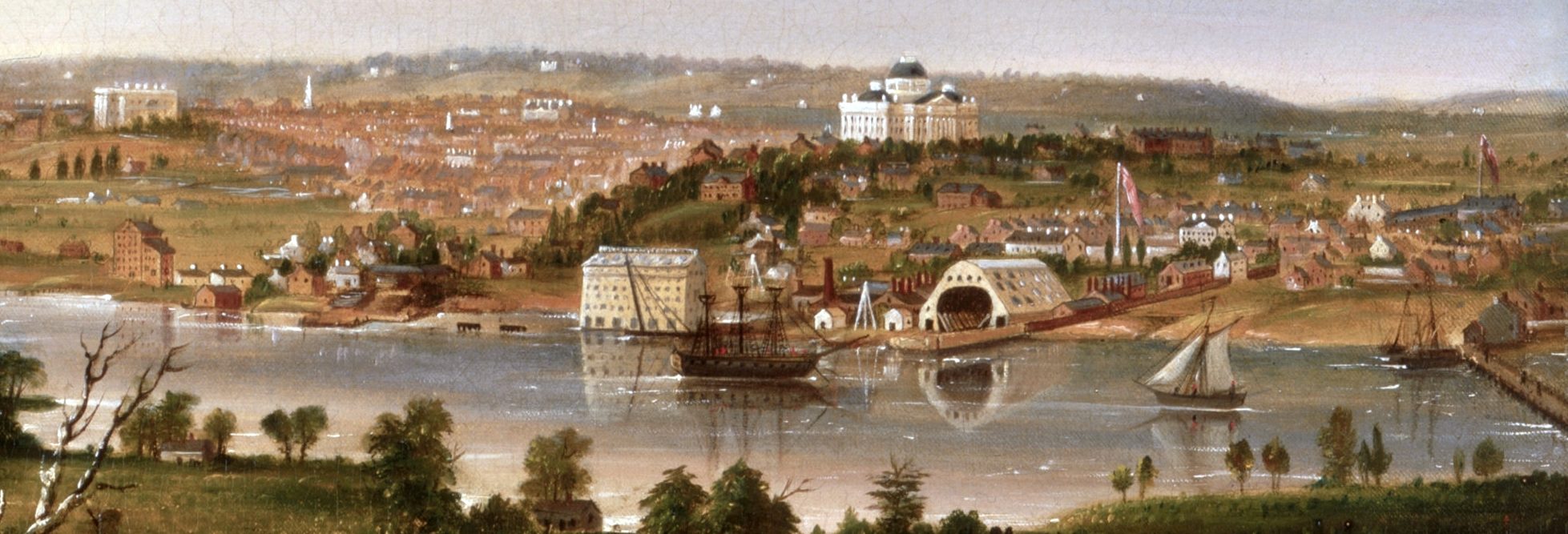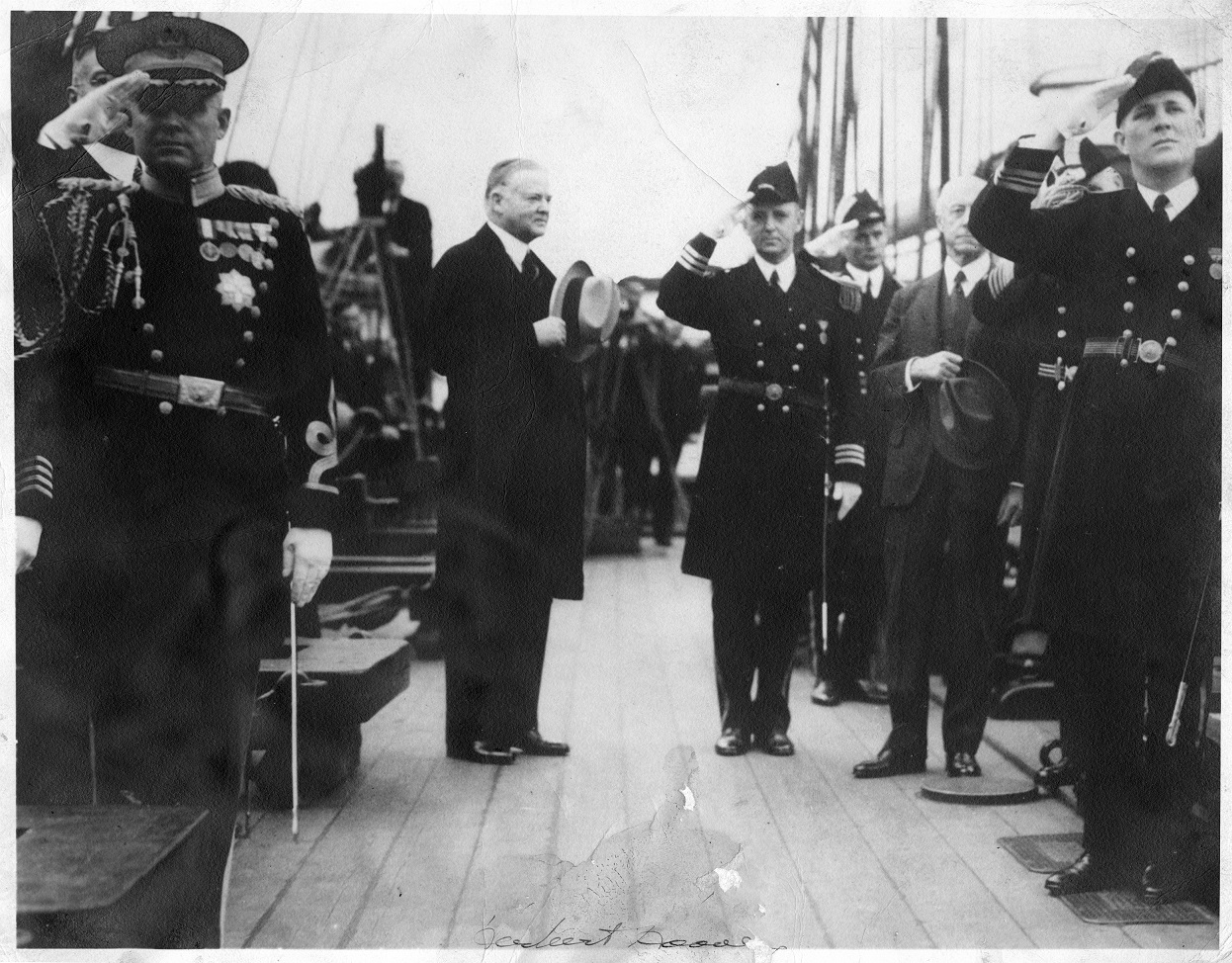

Today, USS Constitution is closely associated with the Charlestown Navy Yard, where the ship has spent most of the last 120 years and undergone numerous restorations. But during her active sailing career, the ship often visited other naval shipyards for a variety of reasons. Among these is the Washington Navy Yard in Washington, DC, whose own history is about take another turn.
Although the Washington Navy Yard continues to serve as headquarters for several significant elements of the US Navy, the Yard’s days as a port of call are now numbered. In February, construction work began to replace the Frederick Douglass swing span bridge, which crosses the Anacostia River downstream of the Navy Yard. The new, lower fixed-span bridge will be only 40 feet above the mean high water level, preventing most modern naval vessels and certainly all sailing ships from transiting upstream to the Washington Navy Yard. The Navy Yard has not been active in repairing or building ships in a long time, but still hosted visiting ships.
The need for repairs and outfitting led USS Constitution to the Washington Navy Yard just before the War of 1812, but she visited again later as a stop on the 1930s National Cruise, reflecting both the importance of the Yard to the Navy and the importance of Constitution to the nation’s capital. Several captains and crew of Constitution would later go on to serve as commandants of the Washington Navy Yard.
Constitution was originally intended to arrive at the Washington Navy Yard as early as 1801 when President Thomas Jefferson wanted to decommission all of the Navy’s frigates and maintain them in Washington as a cost-saving measure. Instead, Constitution remained in ordinary in Boston for two years and then deployed to the Mediterranean at the outbreak of the first Barbary War.
With the end of the war, Jefferson’s cost-saving plan could be executed, but still ended up excluding Constitution. A December 1805 letter from Secretary of the Navy Robert Smith to Congress reported that eight of the Navy’s eleven frigates were located at the Eastern Branch of the Potomac (as the Anacostia River was referred to at the time). Constitution, however, remained as flagship of the Mediterranean Squadron, which included Essex, while the Adams sailed off the Eastern seaboard.
With its ideal Mid-Atlantic location, access to resources and access to national leadership to fund acquisition of those resources, the Washington Navy Yard eventually proved capable of building ships as well as repairing and maintaining them. Originally acquired by Secretary of the Navy Benjamin Stoddert in 1799, the Washington Navy Yard was a work in progress during the first decade of the 19th century. Thomas Jefferson had proposed construction of the a large drydock to place and preserve the decommissioned warships, but proved incapable of obtaining Congressional support.
The first commandant of the Yard was Thomas Tingey, a former British Navy officer who had served in the Continental Navy during the Revolution and distinguished himself in the Quasi-War. Proving to be a capable administrator, Tingey remained in the post until his death in 1829. His residence is now the current home of the Chief of Naval Operations. Under Tingey’s long tenure, the Yard developed into a nearly full-service facility. Though the Yard never gained a drydock, efforts to fill in the marshy waterfront continued, along with construction of permanent structures to replace the original temporary buildings. Shops were built to house such tradesmen as blockmakers, armorers, riggers, carpenters, blacksmiths, coopers, boat builders, painters. In 1806, the sloop of war Wasp became the first of several 19th century warships to be built in the District of Columbia.


Although the Yard was well-stocked with supplies and well-suited to its ship maintenance duties, the competence of the workforce often came into question. In 1807, the Navy Yard’s workforce took an agonizing six months to prepare Chesapeake for recommissioning and deployment. Chesapeake finally did make it down the Potomac and anchored off Hampton to receive additional provisions. When Chesapeake finally cleared the Capes of Virginia to begin her trans-Atlantic journey on June 22, 1807, she was challenged and boarded by the British frigate Leopard with a demand for the American warship to muster her crew for British inspection for deserters. The Chesapeake/Leopard affair became a contributing factor leading to the War of 1812.
In contrast to the Chesapeake refurbishment, the Navy Yard workforce acted with urgency to complete work on Constitution when she arrived on March 5, 1812. The Secretary of the Navy Paul Hamilton visited to evaluate the work that was needed. Once the spars and upper masts were removed and all other movable items taken off, the ship was heaved down on May 2 using teams of oxen to perform the heavy pulling. First the port side was exposed, then starboard. By May 12, cleaning and patching the copper sheathing and caulking was completed and work began to re-rig the ship with new spars and foremast. The bowsprit had been intended for Constellation, but Captain Hull redirected this and other timbers to his ship. Constellation would have to wait. Sky poles and a double dolphin striker were added to the refurbished rig. The ballast load was also reduced in an effort to improve the ship’s sailing performance. By early June, stores began to arrive as Captain Hull prepared to return his command to sea. On June 10 Constitution left the Washington Navy Yard for Alexandria, VA, just a few miles downriver, for additional provisions and installation of a new lower capstan. Constitution left Alexandria on June 18 after receiving word that the United States had declared war on Great Britain.
During the War of 1812, Constitution fared far better than the Navy Yard that fitted her for combat. With the British Army’s victory at Bladensburg on August 24, 1814, the nation’s capital lay exposed and undefended. With the British approaching the Yard that evening, the commandant of the Yard, Thomas Tingey, ordered the Yard to be torched. As darkness fell on the capital, flames lit the sky. The Navy Yard’s storehouses were burned, along with the New York, Boston, General Greene, Argus, and the hull of the nearly completed frigate Columbia.
Constitution’s final stays in the Washington Navy Yard were during her National Cruise following the four-year restoration that was completed in 1931. “Old Ironsides” arrived at the Washington Navy Yard on November 7, 1931. During her 11-day stay, thousands of visitors walked her decks, including President Herbert Hoover, who came on board on November 11. On November 18, the minesweeper Grebe towed the recommissioned frigate back down the Potomac and on to further port calls in warmer climes over the winter months.


The ship returned to the Washington Navy Yard on April 16, 1932. This stint would prove to be the longest extended call at the nation’s capital. With the exception of a sojourn in May over to Alexandria, VA to celebrate the dedication of the George Washington Masonic Temple, Constitution remained in Washington until December 8.
By the time of Constitution’s last visit, the Washington Navy Yard was no longer a ship-building facility. It had undergone a major transformation in the previous 120 years and was better known as the Naval Gun Factory. Despite that change, the Yard still had the needed skill sets to repair wear and tear to Constitution’s wooden decks that had been caused by the trampling of over two million visitors during that year’s port visits.
Sources:
Gordon S. Brown, The Captain Who Burned His Ships: Captain Thomas Tingey, 1750-1829, Naval Institute Press, Annapolis, MD. 2014.
William S. Dudley (Editor), The Naval War of 1812: A Documentary History (Volume 1), Government Printing Office, Washington, DC. 1985.
Edward J. Marolda, The Washington Navy Yard: An Illustrated History, Naval Historical Foundation, Washington DC. 2013.
Tyrone G. Martin, A Most Fortunate Ship: A Narrative History of Old Ironsides (Revised edition), Naval Institute Press, Annapolis, MD. 1999.
_____
The activity that is the subject of this blog post has been financed in part with Federal funds from the National Maritime Heritage Grant program, administered by the National Park Service, U.S. Department of the Interior, through the Massachusetts Historical Commission, Secretary of the Commonwealth William Francis Galvin, Chairman. However, the contents and opinions do not necessarily reflect the views or policies of the Department of the Interior, or the Massachusetts Historical Commission, nor does the mention of trade names or commercial products constitute endorsement or recommendation by the Department of the Interior, or the Massachusetts Historical Commission.
The Author(s)
David F. Winkler
Historian, Naval Historical Foundation
Dr. David F. Winkler is a guest blog contributor and an historian at the Naval Historical Foundation.
